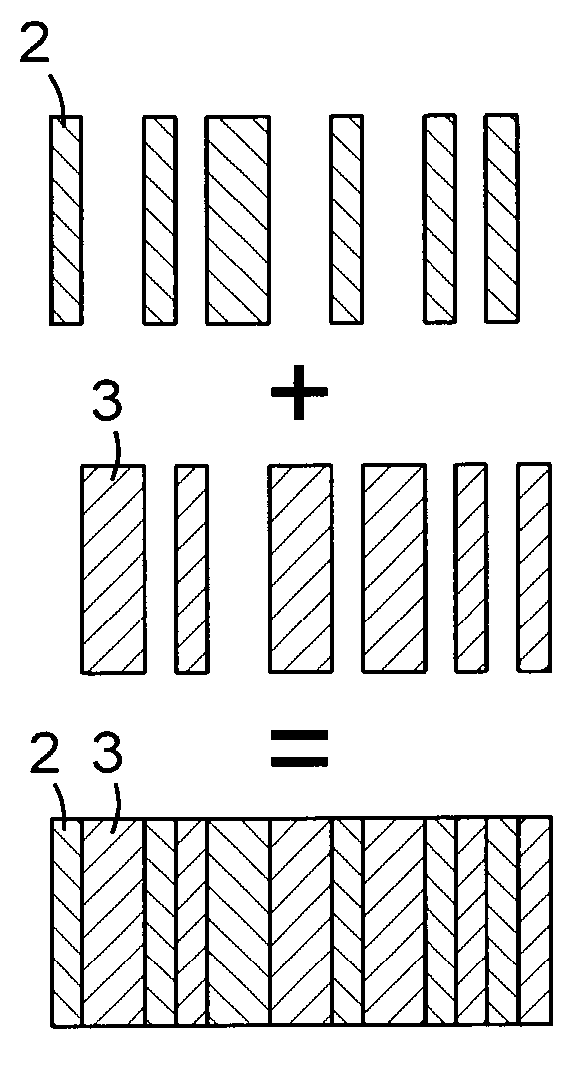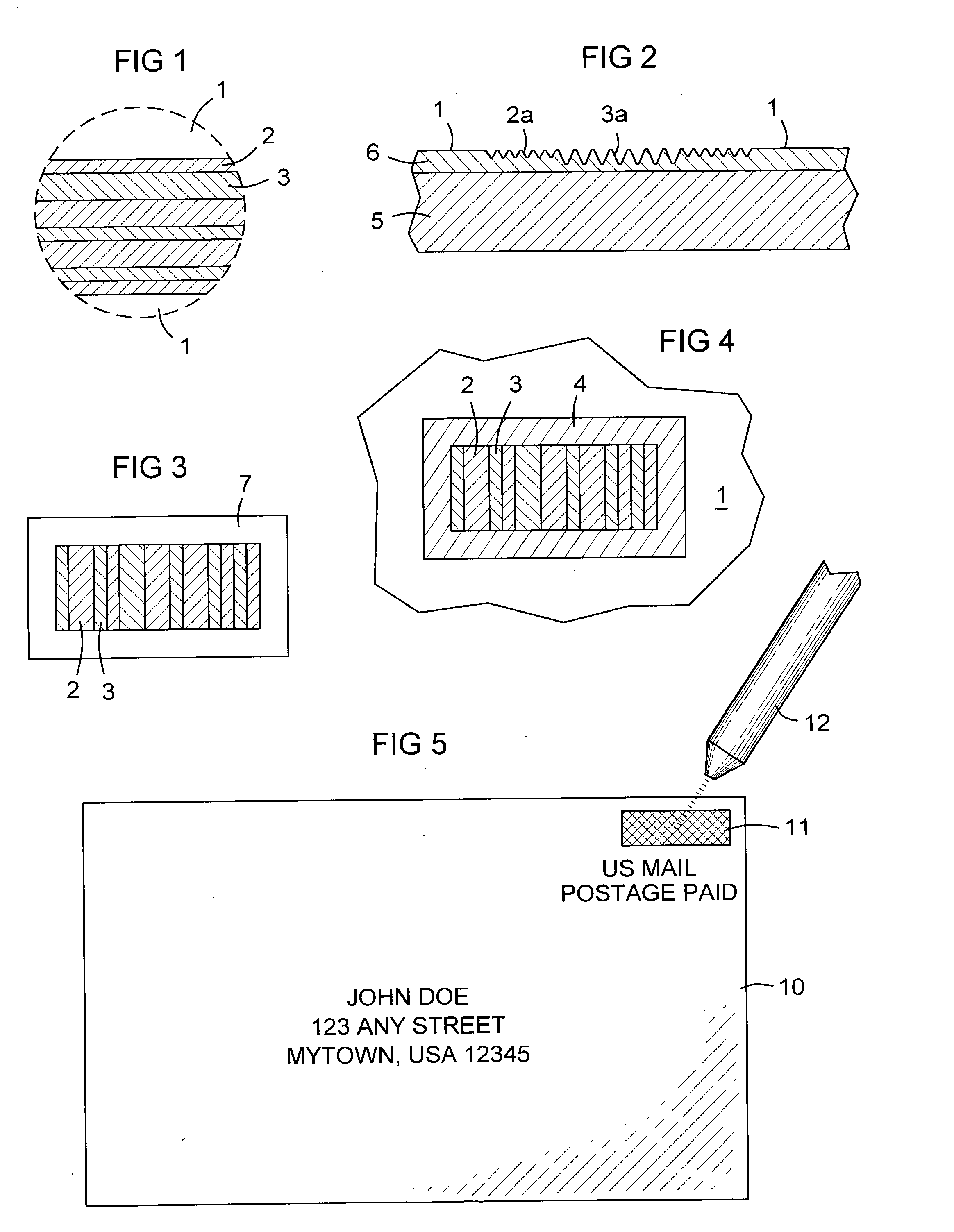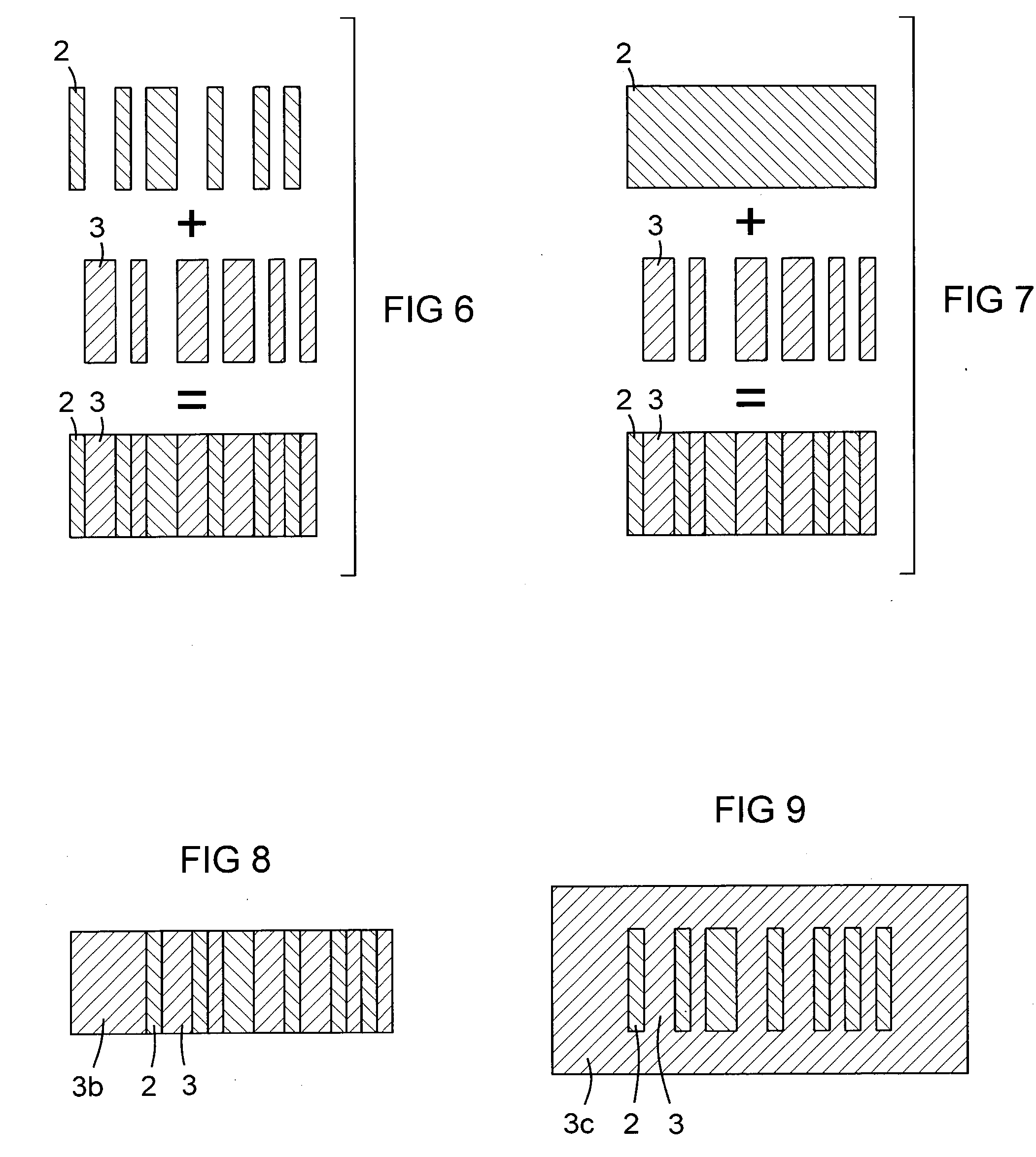Information encoding on surfaces by varying spectral emissivity
a technology of information encoding and spectral emissivity, applied in the field of steganography, can solve the problems of counterfeiting, printing, and being read, duplicated, printed by unauthorized parties, fluorescent inks, holograms, etc., and achieve the effects of avoiding counterfeiting, copying, and alteration
- Summary
- Abstract
- Description
- Claims
- Application Information
AI Technical Summary
Problems solved by technology
Method used
Image
Examples
Embodiment Construction
[0065] This invention is a method for creating machine-readable codes and marks which are detected and read by means of spectral emissivity, comprising the steps of:
[0066] providing two or more inks having different intrinsic spectral emissivities, or which upon drying leave a surface with controlled surface texture;
[0067] printing a symbol with these inks using conventional printing means, and / or embossing the printed surface with a symbol having varying surface texture or roughness;
[0068] applying the symbol directly to a document or article or affixing it to a label for future application;
[0069] scanning the symbol to detect the areas of differing spectral emissivity;
[0070] decoding the information in the symbol; and
[0071] displaying this information or transferring it to a data processing system.
[0072] The codes and marks thus created are useful in marking and labeling documents and products in such a way that the mark cannot be detected by eye, or detected, scanned, and reprodu...
PUM
 Login to View More
Login to View More Abstract
Description
Claims
Application Information
 Login to View More
Login to View More - R&D
- Intellectual Property
- Life Sciences
- Materials
- Tech Scout
- Unparalleled Data Quality
- Higher Quality Content
- 60% Fewer Hallucinations
Browse by: Latest US Patents, China's latest patents, Technical Efficacy Thesaurus, Application Domain, Technology Topic, Popular Technical Reports.
© 2025 PatSnap. All rights reserved.Legal|Privacy policy|Modern Slavery Act Transparency Statement|Sitemap|About US| Contact US: help@patsnap.com



